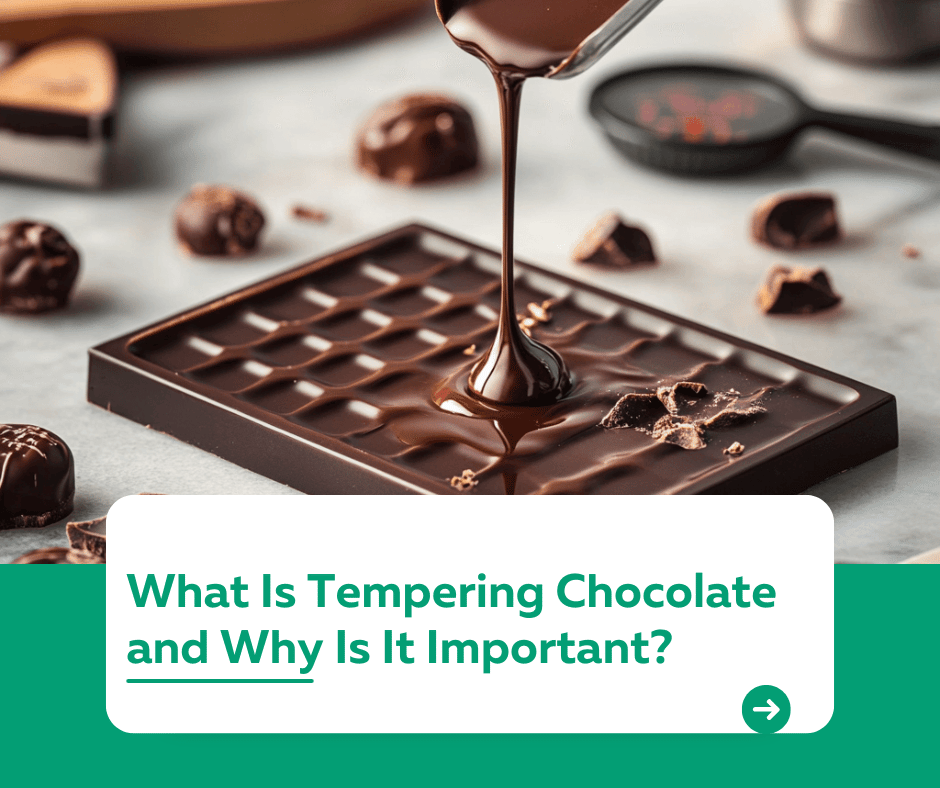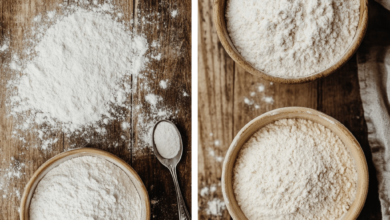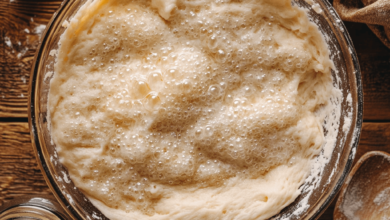What Is Tempering Chocolate and Why Is It Important?

Introduction
“What is tempering chocolate?”
Tempering chocolate is a process used to give chocolate its smooth, glossy finish and the perfect snap when broken. It’s a crucial technique in baking and confectionery to ensure chocolates look and taste professional. In this article, we’ll dive into what tempering chocolate means, why it’s important, and how you can master this skill at home.
1. What Is Tempering Chocolate?
Tempering chocolate is a controlled process of melting and cooling chocolate to stabilize its crystals.
- Why Temper Chocolate?
- Produces a glossy finish.
- Creates a firm texture that doesn’t melt easily in your hands.
- Ensures a satisfying snap when the chocolate is broken.
- Prevents bloom (white streaks or spots) caused by unstable fat crystals.
Tempering is especially important for making chocolate bars, truffles, and dipped treats like strawberries or cookies.
2. Why Is Tempering Chocolate Important?
Without tempering, chocolate can turn dull, grainy, or streaky.
- Key Benefits of Tempering:
- Appearance: A smooth, professional look.
- Texture: A firm, melt-in-your-mouth consistency.
- Shelf Life: Prevents fat bloom, extending the chocolate’s freshness.
Tip: Properly tempered chocolate holds its shape and doesn’t melt too quickly when handled.
3. The Tempering Process: Step-by-Step Guide
Here’s how you can temper chocolate at home:
What You’ll Need:
- High-quality chocolate (dark, milk, or white)
- Double boiler or microwave
- Candy thermometer
- Spatula
Steps:
1️⃣ Melt the Chocolate:
- Use a double boiler or microwave to melt 2/3 of the chocolate, keeping the temperature:
- Dark Chocolate: 113–120°F (45–49°C)
- Milk/White Chocolate: 104–113°F (40–45°C)
2️⃣ Cool the Chocolate:
- Add the remaining 1/3 of unmelted chocolate (seed chocolate) to the melted chocolate. Stir until smooth.
- Cool to:
- Dark Chocolate: 82–84°F (28–29°C)
- Milk/White Chocolate: 80–82°F (27–28°C)
3️⃣ Reheat Slightly:
- Warm the chocolate gently to working temperature:
- Dark Chocolate: 88–90°F (31–32°C)
- Milk/White Chocolate: 84–86°F (29–30°C)
Tip: Maintain these temperatures while working to keep the chocolate tempered.
4. Tips for Success
- Use High-Quality Chocolate: Good-quality chocolate with high cocoa butter content is easier to temper.
- Avoid Water: Even a drop of water can cause chocolate to seize and ruin the tempering process.
- Work Quickly: Tempered chocolate sets quickly, so act fast when dipping or molding.
- Test the Temper: Spread a small amount of chocolate on parchment paper. If it sets glossy and firm within a few minutes, it’s properly tempered.
Conclusion
Tempering chocolate is an essential technique for achieving professional-quality confections. Whether you’re making chocolate bars, truffles, or decorative treats, mastering this process ensures your chocolate is glossy, firm, and delicious. With a little practice, you can temper chocolate like a pro and take your baking skills to the next level.
For more baking tips and techniques, visit our Kuestion.com.




